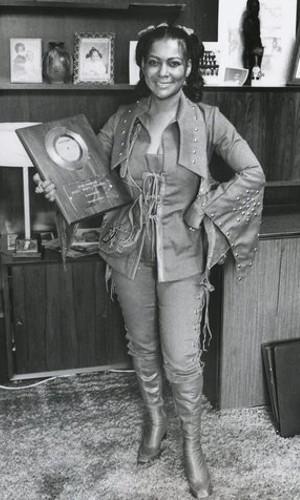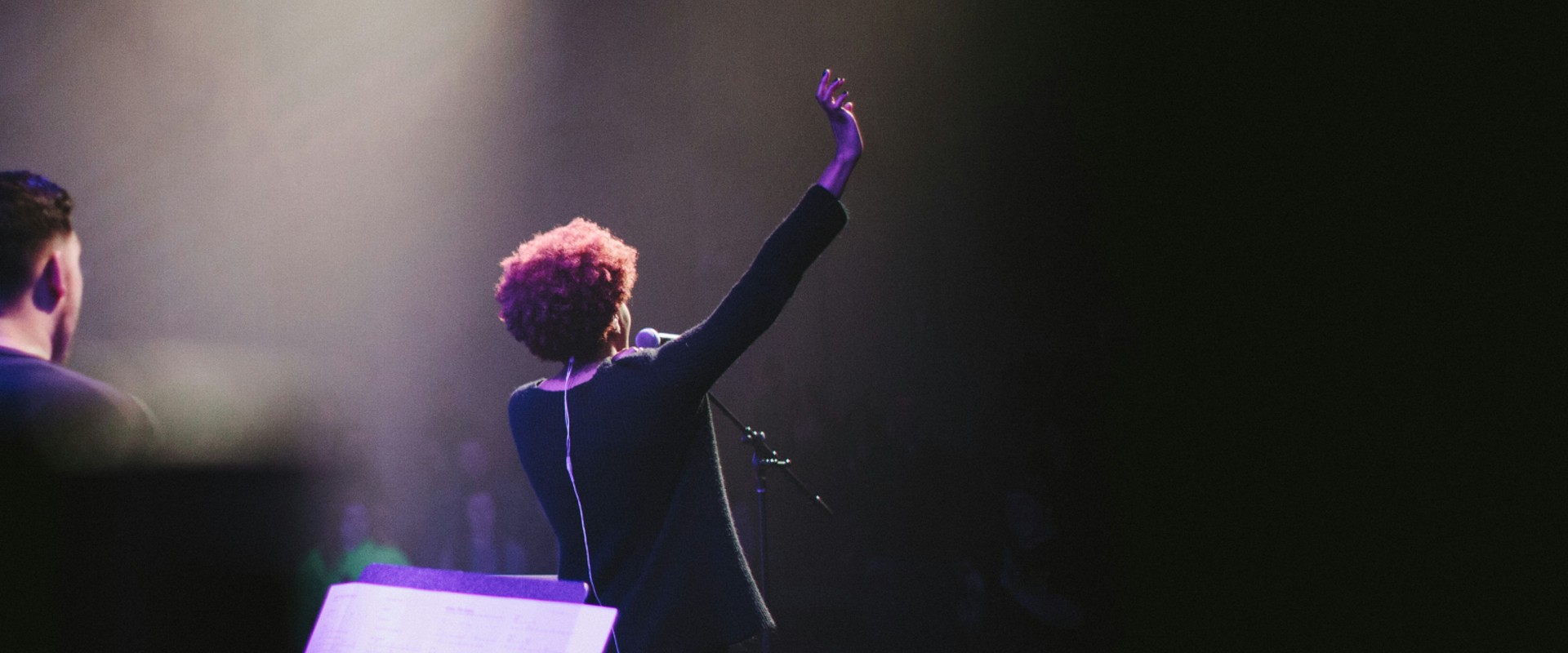A Community Call: Spotlight on Women’s Safety in the Music Industry
Women’s History Month is, as the Women’s History Museum (2024) notes, when we “honor women’s contributions to American history…” as a nation (p. 1). In this blog post, I wanted to spark a conversation about honor that expands the actions of this month from performative to critical; in other words, it shows honor in a tangible form, one that includes physical and psychological safety, specifically in the music industry. Grasping the seemingly simple solution to women’s safety will take an understanding of how the concept of safety relates to creativity.
The five tiers of Maslow’s hierarchy of needs, the psychological theory focusing on human motivation (Mclead, 2024), helps explain what needs lead to self-actualization, i.e., when one reaches their full potential in morality, spontaneity, meaning, self-fulfillment, and more. The self-actualization tier includes something important to the industries that monetize culture – creativity. But to reach this pinnacle, we must first attend to four needs: physiological (food, water, shelter, sleep, sex), safety (security, employment, family, health), belongingness and love (friendship, intimacy, community), and esteem (confidence, respect, achievement).
In particular, a study analyzing US data from 2018 showed that men led in homelessness, representing 70 percent of that population, or 260,284 men (Moses & Janosko, 2024). Some possible reasons for this inequality were systemic, e.g., low education levels that led to poor job prospects, and the criminal justice system (at that time, about 48,000 people a year were going to homeless shelters directly after being released from jails and prisons (Ibid.)). This shows that the lack of physiological needs being met by a large population of men in America is an issue. Researchers suggest the large number and percentage of homeless men in America whose physiological needs are unmet is a sign of other societal issues (Fall, 2014; N.A.E.H., 2024).
One such issue: the lack of safety for women. And for context, safety concerns affect both men and women, but in different ways.
Across the world, one out of four women has experienced some form of physical violence, with other forms of abuse being economic, emotional, and psychological (Huecker et al., 2023). When looking at how issues of women’s safety manifest in the music industry, all forms of the aforementioned abuses appear as the rising number of allegations brought about by the #MeToo Movement bears witness (Millman, 2023). The current surge of claims is attributed to New York and California temporarily allowing adult sexual abuse survivors to file lawsuits.

Creatively, a misogynistic view consistently appears in media, in what Laura Mulvey calls “the Male Gaze.” This posits that visual media is designed from the perspective of what will please males, i.e., camera angles, the chosen actors, and how audiences engage with the media (Stefanovic & Parać, 2021). A similar phenomenon is seen in popular forms of music. For example, look at the media representation of rap music and its continued subjugation of women in lyrics and visual representation in music videos (Ishikasachdeva, 2020).
Placing the blame of lyrical vulgarity and the devaluation of women on the creatives – rappers in this instance – shows a lack of understanding of the power structure of the music industry. Though public perception may be that creatives hold the power in the written, performed, and released songs, this is not true. Music publishers (song owners) and record labels (sound recording owners) have managerial control and oversight over lyrical content, song selection, artist signing, and then the choice of which projects to promote — even if the creatives do not agree (Kopano, 2014) Research of millennial rap music showed through lyrical analysis that male rappers’ music represents a variety of topics, but the media focus for this genre is primarily monolithic (Oware, 2018). Appealing to rap’s majority (70-75 percent) white fanbase, the corporations (publishers and record labels) changed the political, social, and party-centered lyrical art form to a violent, homophobic, misogynistic, hypermasculine, and “ghettocentric” focus (Oware, 2018, p. 45).
Consequently, songwriters and artists are now social scapegoats for the corporations that have the power to affect positive systemic change for women and the other communities their songwriters and artists represent. Showing its effects on society through the power of music to influence the actions of men is a study in which listening to 17 minutes of music, in this case, heterosexist rap music, negatively changed the perception of those in the position to make job hires (Binder & Ward, 2016). With decades of commercial music whose value chain is controlled by one demographic, these corporations have played a part in training society to accept what does not support women.

Interestingly, outside of the corporate reach, rap has always included women creatives (e.g., MC Lady B and MC Sha-Rock), as the origins of this artform’s commercial success begins with a woman – Sylvia Robinson. Robinson took rap from a performance-only art form to a popular recorded genre with the monumental success of the group Sugar Hill Gang and the subsequent commercial release of their rap song “Rapper’s Delight,” which went multi-platinum in 1979 (Oware, 2018). She felt safe enough to find the individual members, name the group, and produce their first record (which was “Rapper’s Delight”), showing early rap creatives’ respect for anyone capable of creating good music. Adding commercial interest shifted the inclusive environment of the early pioneers of rap.
Currently, the corporate ecological system of the music industry does not create feelings of safety for most women, as demonstrated by the few women who are music producers, songwriters, and artists (Smith et al., 2023). For music production, an evaluation of the Billboard Hot 100 Year-End Charts shows a 34 (men) to 1 (women) ratio, which is 2.8 percent of all music producers. As songwriters, only 12.8 percent of the writers in the music industry are women, with 57 percent of pop songs not having a single woman writer and less than 1 percent having only women writers. Finally, women make up 22.3 percent of the artists in the industry. All this is reflected in women receiving only 13.9 percent of the Grammy nominations from 2013 through 2023. Professor Stacey Smith who led the team behind the report, suggests this is because women are seen as lacking in skills (Ishikasachdeva, 2020).
Subjugation is a theme that is seen from the inception of the music industry, which may hold the key to why it is an industry where women feel unsafe. After creating the phonograph (a device similar to a record player), Thomas Edison’s first marketing idea was to create a female doll that used his new recording technology to speak in an infantile manner (Black, 2012). From the start this reflects the commodification of women as corporations mass-produce female bodies in their desired image and to control exactly what those bodies say, thus influencing more women to act similarly. Understanding social constructivism – learning occurs in groups – can show the power of triangulating communal social media environments with subjugatory imagery and lyrics about women and the power of traditional media to anchor learning in the consciousness of society. This seed bears fruit in pay inequality, over-sexualization, and lack of proper credit (Alexander, 2024), e.g., not giving women credit as music producers, which otherwise would allow for more pay per gig and award opportunities.
Drawing on the research of social scientists, an emerging theme of community policing is evident (Alexander, 2024; Barrière, 2021). Autumn Rowe, a Grammy-winner composer and music producer, suggests that creatives develop an environment of allyship where stakeholders speak out if they see an injustice, even calling upon men in the industry to aid women when in spaces where they are absent or receiving unfair treatment (Alexander, 2024). Rowe describes how, at different points in her career, men, such as Sisqó of Dru Hill and Kizzo, spoke up for her in the studio sessions, gave career advice, and affirmed her role as a producer deserving of higher pay when her involvement was in question.
Corroboration for the sentiment of community comes from the live music segment of the music industry, with research that calls for bystander intervention to ensure the creation of safe spaces. This concept is successfully utilized by Ladyfests and other festivals that feature feminist DIY artists (Barrière, 2021). The scholar pulls from the German language two translations for the concept of “safe space”: geschützter Raumfirst, an environment of protection, and frei Raumsecond, “an enabling environment” (p. 72). Clarifying what the space enables is simple if looking through the lens of Maslow’s Hierarchy of Needs – safety that is collectively created with the physical and psychological assistance of music industry stakeholders and that fosters an environment that allows all participants to reach their full creative potential. As communal beings, art is the encapsulation of culture; as entrepreneurs, that tangible piece of culture feeds the collective soul of society.
As a society, we cannot remove intersectionality (e.g., gender and race) and life experiences from the creators of art. If women in the music industry feel unsafe, we do ourselves a disservice by circulating that fear in audio and visual media that further spreads the learned behavior throughout society. This is a cognitive poison that must be treated.
In order to yield a cultural crop that genuinely represents the epistemological (knowledge), axiological (value), and ontological (state of being) leanings of our generation, fans must demand women be positioned to give them legitimate power, that successful women must use their influence to create avenues for women to learn and collaborate, and that male allies be on guard to aid a female population that deals with unsafety consistently.
More information about women in the music industry with abnormal success can be seen in case studies about Missy Elliott as analyzed through the lens of feminism and erotic capital (Garcia-Borbón & Alexander, 2024), Grammy-winner Autumn Rowe and the discussion of fame versus influence (Alexander, 2024), and Taylor Swift and her Era’s tour and its multiple impacts on society (Garcia-Borbón, 2024). These cases are part of a larger music industry-specific case study series that features articles about women, the work of women scholars, and more. It is our job as scholars to research and communicate our findings, and we hope this series sheds light on the contributions of several talented women. But we should not forget, and must continue to combat the lack of safety experienced by women inside and out of the music industry.



























































































